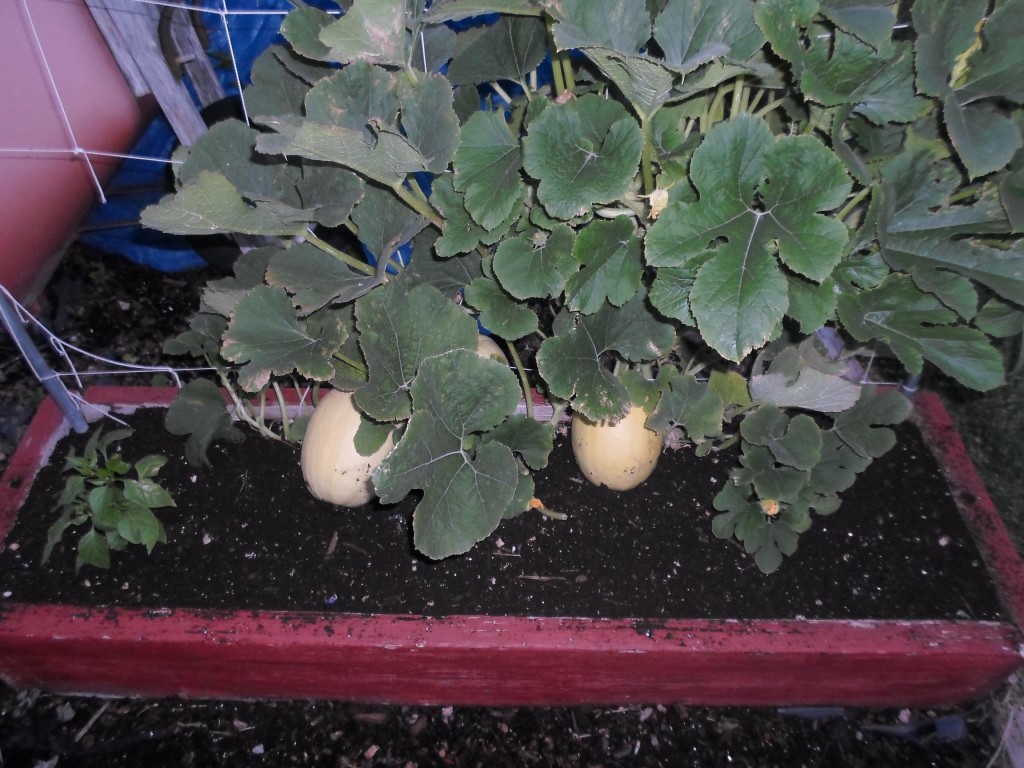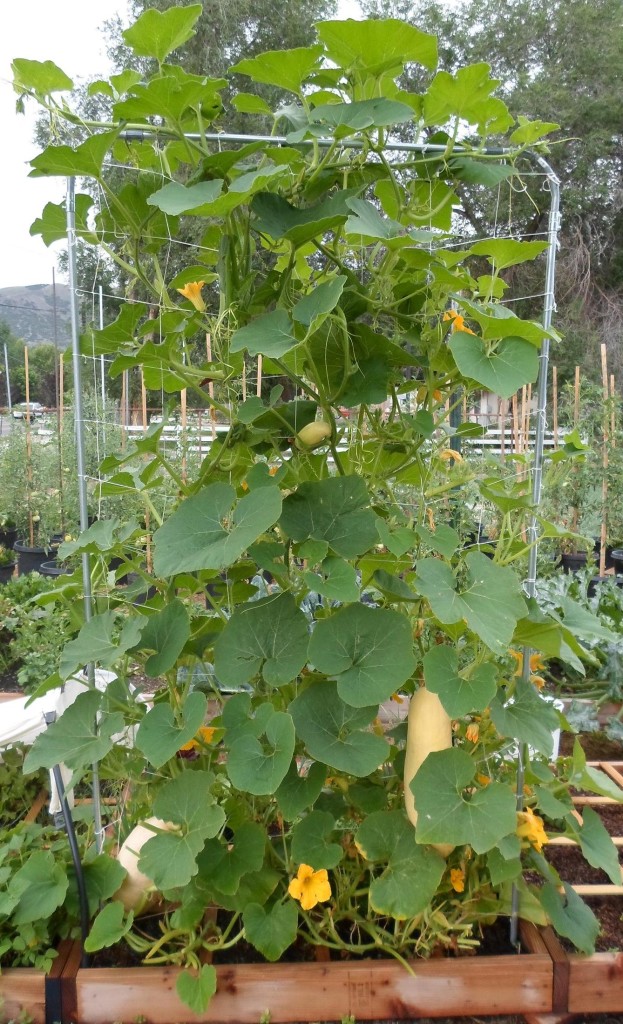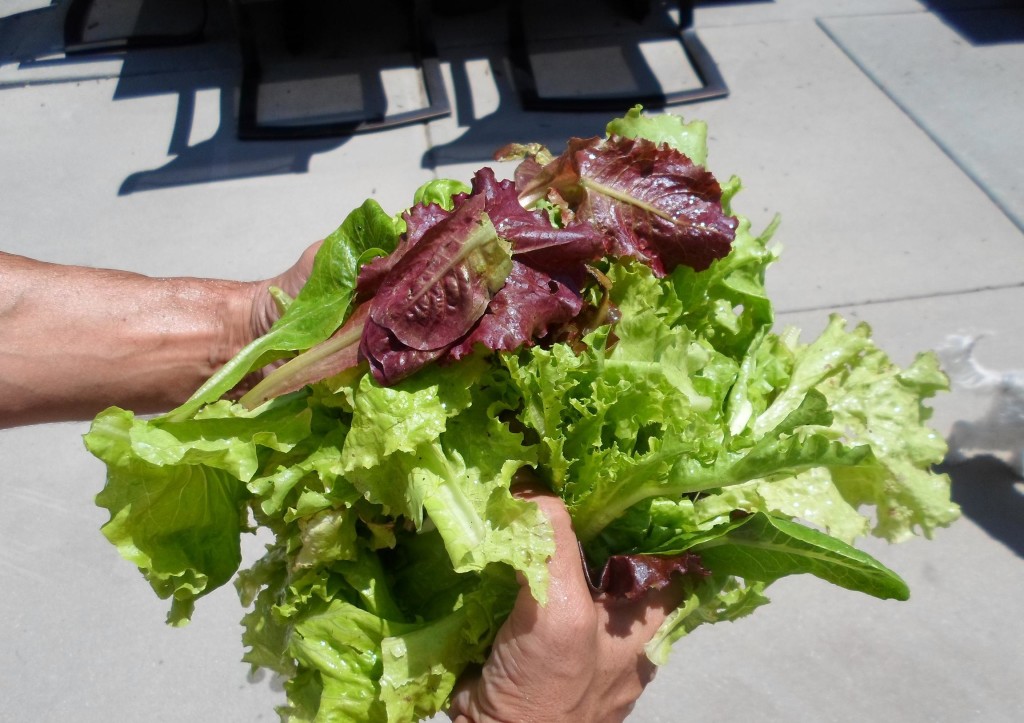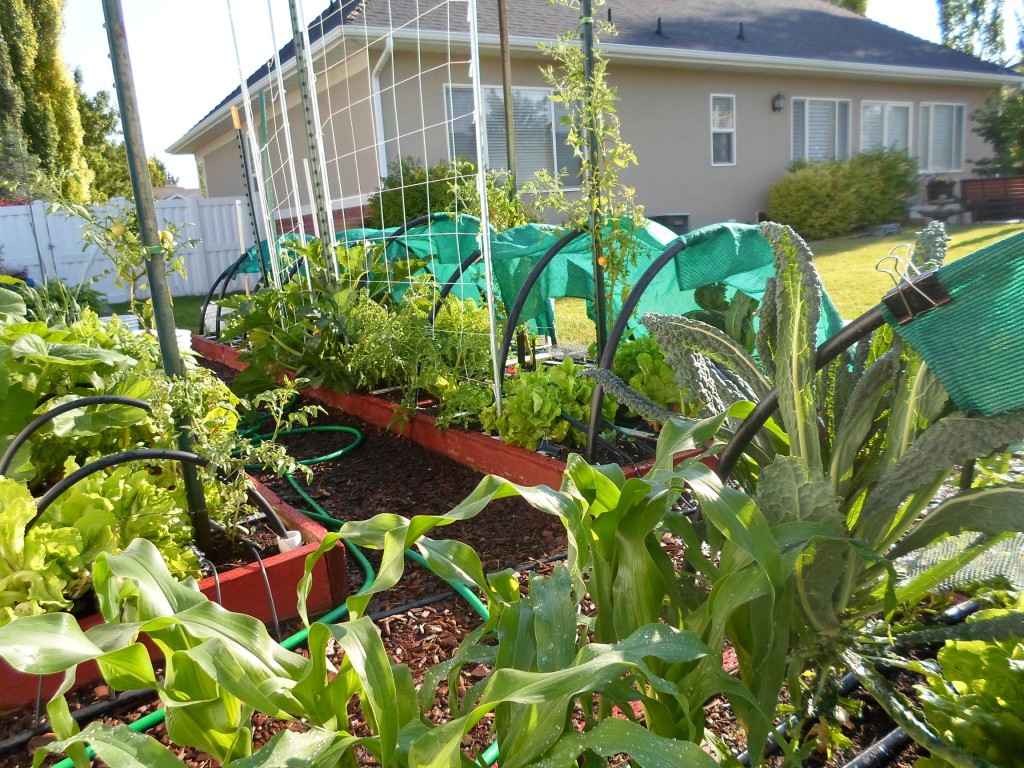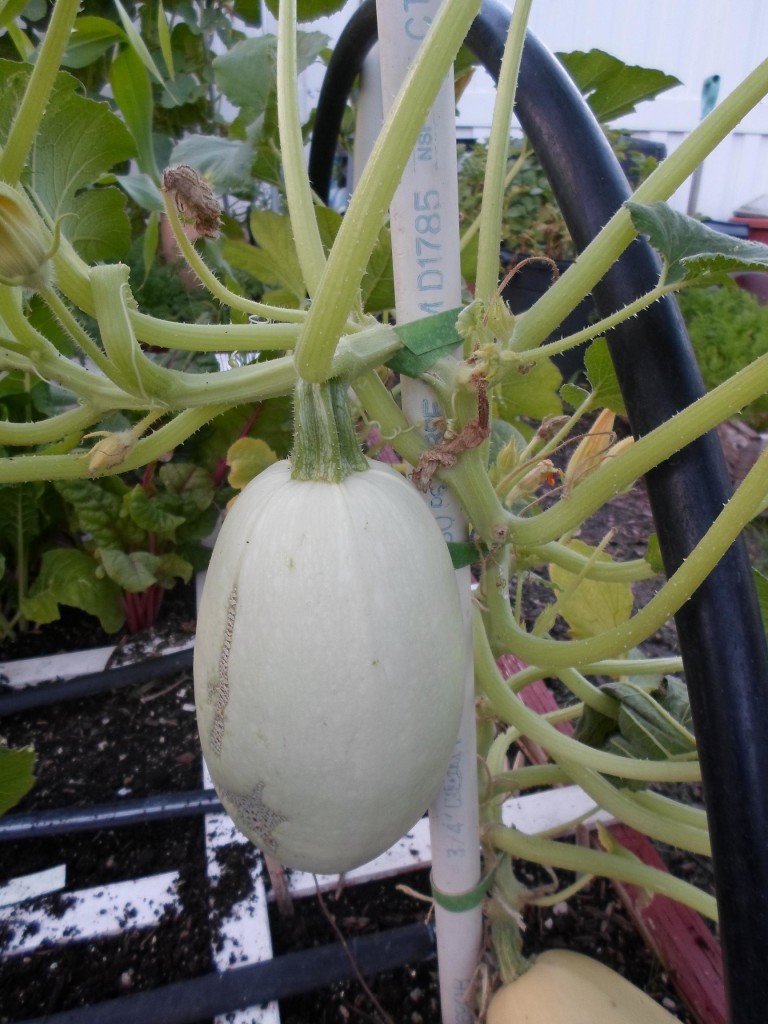 This time of year I begin to slow down a little and enjoy the harvest of the season. In about two weeks our weather will begin to cool off, and then the gardens really start to produce even more than they are right now. I’ve already planted a few squares to prepare for a fall season in the spaces I have open. I’ve been experimenting with a few things this season. Here’s a picture of spaghetti squash growing vertically on a simple piece of PVC. It works very well-it’s being held up by velcro. This is a variety called Pinnacle by Johhny’s, and it’s excellent. I’ve been able to get about 4 or 5 per plant before the frost dates usually ends it’s production. Right now it’s tons of squashes, zucchini, beans, cucumbers, lettuce, chard, and cherry tomatoes. Corn looking good and should be ready in a couple of weeks.
This time of year I begin to slow down a little and enjoy the harvest of the season. In about two weeks our weather will begin to cool off, and then the gardens really start to produce even more than they are right now. I’ve already planted a few squares to prepare for a fall season in the spaces I have open. I’ve been experimenting with a few things this season. Here’s a picture of spaghetti squash growing vertically on a simple piece of PVC. It works very well-it’s being held up by velcro. This is a variety called Pinnacle by Johhny’s, and it’s excellent. I’ve been able to get about 4 or 5 per plant before the frost dates usually ends it’s production. Right now it’s tons of squashes, zucchini, beans, cucumbers, lettuce, chard, and cherry tomatoes. Corn looking good and should be ready in a couple of weeks.
[ois skin=”below post”]

